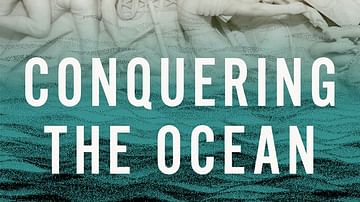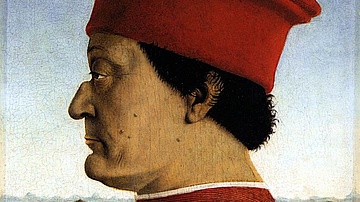Pre-Raphaelites: Modern Renaissance marks the first multidisciplinary exhibition in Italy to examine the profound impact of Italian Renaissance art on the Pre-Raphaelite movement, which flourished in Victorian and Edwardian Britain (c. 1840-1920).

Displayed throughout the hallowed halls of the San Domenico Museum, a restored 13th-century Dominican convent in Forlì, Italy, are over 300 works of art, which juxtapose and highlight the revolutionary creativity and intensity of two important artistic eras. In this exclusive interview, James Blake Wiener speaks to Mr. Peter Trippi, a co-curator of the exhibition and an expert of Victorian art, about the exhibition.
JBW: Peter, thanks so much for speaking to me and introducing us to a most gorgeous exhibition.
I have always seen the Pre-Raphaelite artists as rebels and innovators. Their rejection of Victorian complacency and industrial materialism, as reflected in their works, shocked segments of the British public. Looking to the distant past to find a more natural vision, Pre-Raphaelite artists embraced that which was ordinary while still applying innovation to technique and treatment of form in novel ways.
What was it that made the revolt of the Pre-Raphaelite Brotherhood so enduring and yet so profound in its immediate impact?
PT: The earliest paintings exhibited by members of the Pre-Raphaelite Brotherhood electrified their contemporaries in the late 1840s and early 1850s for several reasons. Visually, they were completely out of step with everything around them at London's crowded major exhibitions: their brilliant coloring stood out from the drab browns and greys used by most artists at the time; their draftsmanship and paint handling was precise rather than "sloshy" (the term they used to criticize their older colleagues); their compositions were willfully naïve and sometimes even jarring, ignoring the polite post-Raphaelite conventions that the Royal Academy promoted; and they were depicting narratives that were unexpectedly high-minded (such as the Annunciation to the Virgin Mary) or gruesomely passionate (such as the run-up and aftermath of Lorenzo's murder in John Keats's Romantic poem Isabella and the Pot of Basil). Viewers could see these were young men with talent and something fresh to say, but they were not quite sure what to do with it. It was not until 1851, when the prestigious critic John Ruskin came to their defense, that the British public began to accept these innovations.
The continuing power of those innovations was demonstrated in 1986 when I was sitting in an art history lecture hall at the University of St. Andrews in Scotland. As an American exchange student, I had never even heard of the Pre-Raphaelites (who were little known in the U.S. then). But I sat up straight in my chair as their brilliantly colored, oddly composed, and often erotic images came up on the screen. 175 years after its launch, the Pre-Raphaelite Brotherhood's power to fascinate is still evident. Once they start, people cannot stop looking.

JBW: Highlights on display within the exhibition include celebrated paintings and drawings by the great Italian masters, including Botticelli, Lippi, Verrocchio, Michelangelo, Veronese, Titian, and even Guido Reni. These are juxtaposed with major works by British artists including Dante Gabriel Rossetti, John Everett Millais, William Holman Hunt, John Ruskin, and J. W. Waterhouse, among others. The pairing of Renaissance Italian antecedents with Pre-Raphaelite masterpieces affords visitors a rare opportunity to compare and contrast across time and space.
What new perspectives can the visitor learn with regard to Pre-Raphaelites as a result of this exciting pairing?
PT: The exhibition at Forlí has a light touch; it is almost poetic in the way it allows the Italian Old Masters and their British admirers to converse with each other in the same rooms, without striving to show direct influences or replications. A great example is the large room of Dante Gabriel Rossetti's mature paintings, most of which show women in bust-length portrait formats, as if sitting at a window. These images (of such sitters as Jane Morris and Fanny Cornforth) have become famous around the world, but never before have we seen them hanging side by side, literally interspersed, with the Madonnas, Florentine noblewomen, and Venetian courtesans to which Rossetti was responding. It is only in an art-rich country like Italy that a museum can make this case so visibly. In the UK, for example, there simply are not enough of the Italian prototypes available to lend them to a show about 19th-century British art. My co-curator Liz Prettejohn and I knew that this opportunity might never come again and so we pounced on it. Once visitors leave that Rossetti room, they will never see his famous woman-at-the-window the same way; suddenly her backstory has become clear.

JBW: Aside from paintings and drawings, sculptures, prints and photographs, to furniture, ceramics, glass, metalwork, tapestries, wallpaper, illustrated books, and jewelry are also displayed within Pre-Raphaelites: Modern Renaissance.
Many Pre-Raphaelites artists believed that the way art was produced could shape wider cultural values. Is this reflected within the exhibition, and if so, how?
PT: Our curatorial team was eager to show how the Pre-Raphaelites' innovative ideas about the power and romance of Italian Renaissance art were transmitted not only through "fine art" (paintings, sculptures, drawings, and prints) but also through the applied (decorative) arts. We invited Dr. Charlotte Gere, the London-based scholar of decorative arts, to join the team, and she selected most of those artworks, primarily from the Victoria and Albert Museum, Fitzwilliam Museum, and British Museum, but also from other UK collections. One of her aims was to show that the "second generation" of Pre-Raphaelites – especially Edward Burne-Jones and William Morris – were determined to bring their aesthetic into immersive environments ranging from churches to the dining rooms at the Victoria and Albert Museum. They also made objects in every possible medium that individuals could buy and live with, often on the expensive side, but not always. By 1870, their worldview had morphed into the Aesthetic Movement (the so-called Cult of Beauty), which impacted every aspect of visual culture in the UK and, by extension, its empire and the United States. The most dramatic examples of immersive decoration in our show are the huge Holy Grail tapestries designed in the 1890s by Edward Burne-Jones and hand-woven by William Morris's team for a wealthy collector's baronial hall near London.

JBW: Pre-Raphaelites: Modern Renaissance additionally explores the important and often overlooked contributions made by accomplished female artists to the Pre-Raphaelite movement.
What can you tell us about these Victorian talents, and how are they differentiated from their male colleagues within the show?
PT: We are pleased to have 15 women artists represented in our exhibition through 26 different works. In order of appearance, they are Elizabeth Siddal, Christina Rossetti, Maria Rossetti, Eliza Jameson Strutt, Evelyn De Morgan, Christiana Jane Herringham, Constance Phillott, Maria Cassavetti Zambaco, Marie Spartali Stillman, Julia Margaret Cameron, Beatrice Parsons, Marianne Stokes, Phoebe Anna Traquair, Eleanor Fortescue-Brickdale, and May Cooksey. Over the past quarter-century, scholars have proven that women were fully involved in the Pre-Raphaelite movement as it evolved over time, but usually, their stories have been ignored or even erased by subsequent generations. That injustice is certainly not unique to art history, but it is time to rectify it, and we were delighted that so many relevant loans were approved.
Some of these women have been thoroughly studied (such as Dante Gabriel Rossetti's wife and collaborator, Elizabeth Siddal) while others still need to be investigated (such as the enigmatic May Cooksey). We have scattered them throughout the show rather than placing them in a female "ghetto," and we are especially proud to have six major examples of mature work by Evelyn De Morgan. Her parents wanted her to marry a rich man and start a family, but with the help of her artist-uncle J. R. Spencer Stanhope (also in our show), she pursued formal artistic training and ultimately exhibited her large symbolist canvases at London's prestigious Grosvenor Gallery right alongside starry male colleagues like Edward Burne-Jones. I would argue that she surpassed her uncle in quality and ambition.
JBW: I was intrigued to learn that over time, the Pre-Raphaelites and their admirers shifted their attention to other periods in Italian art, including 16th-century Venetian art.
Could you tell us more about this transfer in focus, and how that is revealed within the exhibition?
PT: Because the period we are studying is so long (1840s through 1920s), it is inevitable that the British artists would shift in their predilections for Italian art. In the beginning, the Pre-Raphaelite Brothers had little original Italian art to study in person in London, so they consulted prints and illustrated books. One of their heroes was Fra Angelico, not only for his seemingly naïve compositions and handling (naïve as compared with Raphael) but also because he was a monk – a man of faith who expressed his devotion through art, something the Brothers felt was lacking in British art of the 1840s. Our co-curator Cristina Acidini (former head of the Museums of Florence) selected a superb Angelico, which is now displayed at one end of the huge church that serves as our exhibition's first gallery. At the other end, she has placed Botticelli's famous Pallas and the Centaur so that they face each other. This is a brilliant and quite poetic juxtaposition; back in 1848, when the Brotherhood launched, no one was talking about Botticelli at all. By the 1870s – thanks in large measure to British scholars and collectors getting interested in him – Botticelli was all the rage and was particularly influential on Edward Burne-Jones, whose Holy Grail tapestries are shown just beyond Pallas and the Centaur.

We have many moments of transition like this throughout the show. The gallery devoted to Frederic Leighton is a key example, with its insertion of Lotto, Veronese, and Reni – a disparate trio of heroes! Again, such a loan list could only happen in an art-rich country like Italy. No British or American museum could deliver these prototypes in such quantity or quality.
JBW: One can say that the convent, itself, is another star of the show.
How was it chosen as the venue for Pre-Raphaelites: Modern Renaissance, and why is it the perfect venue to showcase Pre-Raphaelite and Renaissance masterpieces?
PT: It was only in 2021 that director Dr. Gianfranco Brunelli conceived this theme as a logical extension of the series of superb loan exhibitions he has been mounting at the Museo San Domenico. (Most of them have focused on Italian and Continental art, including specific masters and themes such as Mary Magdalene. This is the first one to encompass British art.) He brought in Cristina Acidini (see above) and Francesco Parisi (an independent scholar based in Rome) and then Liz Prettejohn and me. In 2022, we began requesting loans from museums and individuals around the world, and by February 2024, we were opening the show! That is a comparatively quick development process, and I think one reason it worked so well is that many lenders were intrigued by the idea of their British-made, Italian-inspired artworks being shown in Italy to modern Italian audiences.

This theme has previously been tackled in a few exhibitions (e.g., London, San Francisco), but with only a few Renaissance prototypes on view – never so many as we have now. Moreover, the fact that the Museo San Domenico is a renovated medieval monastery adds visual power and meaning to the visitor experience; this is especially notable in the former refectory now devoted to Edward Burne-Jones. In many of his paintings we see scrolling foliage that he borrowed from Renaissance art, and painted on the ceiling above in the Middle Ages are those same scrolling forms. The outer walls are lined with Burne-Jones's art, while the middle of the room features major prototypes by such forerunners as Bellini, Mantegna, and Michelangelo.
JBW: Many readers may agree with me that the Pre-Raphaelite artists remain so compelling because of the exuberance, naturalism, and luminosity found in their works. The Pre-Raphaelites' love affair with the art of the Italian Renaissance allowed them to drive innovation within artistic creation.
What then is the legacy of the Pre-Raphaelites? Moreover, why do you believe visitors come to see this exhibition?
PT: I think that many museums today underestimate the ability of visitors to connect the visual dots for themselves. We are often "spoon-fed" curatorial arguments because our own grasp of art history is slim, and that is OK because it is better to do this than appear exclusive or intimidating. In Italy, however, all young children in public and private elementary schools are taught art history and studio art (and this continues right through high school). And, of course, they are literally surrounded by Italian Renaissance art, which they see not only inside churches and museums but also in public spaces such as piazzas. This means that the visitors in Forlí (95% of whom are Italian) are already familiar with the Italian Renaissance art on view, and therefore eager to learn about the British artists who revered it and adapted it to their own ends.
The response we are getting (through the Italian media and conversations occurring inside the exhibition galleries) is one of surprise (e.g., "How did we not know about these terrific British artists before?") and also of mutual respect: this show is about a profound love and admiration that British artists felt for Italy, and in the final room we even show examples of how late 19th-century Italian artists integrated British approaches into their own work.
We hope that all our visitors will choose to learn more (perhaps by visiting major collections of Pre-Raphaelite art at venues like Tate Britain and the Birmingham Museum & Art Gallery), and ultimately see how imagery and ideas travel across eras and places that are seemingly disparate. Artists play a special role in society by transcending superficial boundaries and looking – really looking – at their colleagues' creations with respect and insight.
JBW: Peter, on behalf of World History Encyclopedia, I thank you so much for sharing your knowledge with us! I thank you so much for your time, consideration, and expertise.
PT: Thank you for taking the time to ask these important questions!
Pre-Raphaelites: Modern Renaissance remains on display, at the San Domenico Museum Piazza Guido da Montefeltro, in Forlì, Italy, until June 30, 2024.
Peter Trippi is editor-in-chief of Fine Art Connoisseur, the national magazine that serves collectors of contemporary and historical realist art, and president of Projects in 19th-Century Art, a firm he established to pursue research, writing, and curating opportunities. Based in New York City, Peter recently completed a six-year term as president of the Foundation for Advancement in Conservation, which supports and raises awareness of the American Institute for Conservation, the country's leading society of conservation and preservation professionals. Peter previously directed the Dahesh Museum of Art (New York City), headed development teams at the Brooklyn Museum and Baltimore Museum of Art, and has created (with Prof. Liz Prettejohn, University of York) international touring exhibitions and publications devoted to the 19th-century British painters J.W. Waterhouse and Lawrence Alma-Tadema. Their latest curatorial project, the exhibition Pre-Raphaelites: Modern Renaissance, is on view in Forlí (near Bologna, Italy) through June 30. It is accompanied by a 600-page catalogue in Italian.








